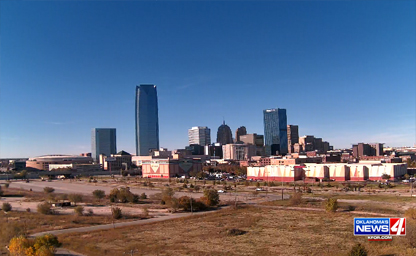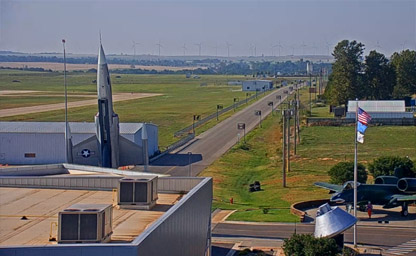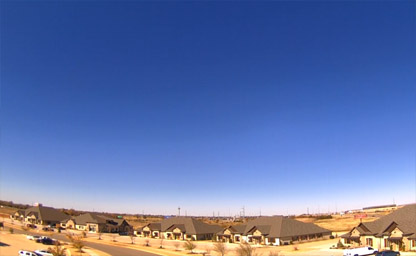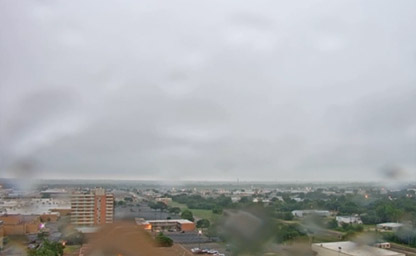
Skyline Oklahoma City
It's known for its cowboy culture and capitol complex

It's known for its cowboy culture and capitol complex

This state-of-the art museum is located in Weatherford

A city and county seat in Logan County

Situated at the intersection of Interstate 40 and State Highway 6

Situated immediately southeast of Oklahoma City

A city in and the county seat of Comanche County

A beautiful town mostly in Washington County in the U.S. state of Oklahoma
IpLiveCams offer a real-time glimpse into the Sooner State’s diverse landscapes, historic sites, and vibrant communities. From rolling prairies to bustling cities, these cameras capture the unique charm and natural beauty of Oklahoma.
Nature enthusiasts can enjoy live feeds from stunning locations like the Wichita Mountains Wildlife Refuge, Turner Falls, and the Tallgrass Prairie Preserve. These webcams showcase rugged landscapes, cascading waterfalls, and expansive grasslands teeming with wildlife.
Urban webcams in cities such as Oklahoma City and Tulsa highlight the state’s dynamic city life. Viewers can explore live views of landmarks like the Oklahoma City National Memorial, Bricktown Canal, and Tulsa’s art deco architecture, as well as cultural events and lively downtown areas.
For a taste of Oklahoma’s rich history and heritage, live cameras near historic sites like Route 66, Fort Sill, and the Cherokee Nation offer glimpses into the state’s fascinating past and cultural significance.
Seasonal changes bring added beauty to Oklahoma’s live webcams. Witness colorful wildflowers in spring, golden sunsets over the plains in summer, vibrant fall foliage, and serene winter landscapes.
Whether you’re planning an adventure, exploring Oklahoma’s cultural treasures, or simply admiring its natural beauty from afar, live webcams provide an engaging way to connect with the heart of the Sooner State.
Oklahoma's history is a compelling tapestry of Native American heritage, westward expansion, and the evolution of a dynamic state. The region has been inhabited for thousands of years, with archaeological evidence pointing to ancient civilizations such as the Caddoan Mississippian culture. Native American tribes, including the Cherokee, Choctaw, Chickasaw, Creek, and Seminole, collectively known as the Five Civilized Tribes, played a pivotal role in shaping the area’s cultural landscape. These tribes were forcibly relocated to Oklahoma during the infamous Trail of Tears in the 1830s, transforming the state into a designated Indian Territory.
During the mid-19th century, Indian Territory became a refuge for dozens of tribes from across the United States, making it one of the most diverse Native American regions in the country. However, the late 19th century marked a turning point with the implementation of the Dawes Act and the subsequent opening of the Unassigned Lands to settlers. The Land Runs of the 1880s and 1890s, most notably the 1889 Land Run, saw thousands of settlers race to claim plots of land, earning Oklahoma its nickname as the "Sooner State."
Oklahoma achieved statehood on November 16, 1907, becoming the 46th state in the Union. The discovery of oil in the early 20th century ushered in an economic boom, with cities like Tulsa earning the moniker “Oil Capital of the World.” The state’s economy thrived, but the Dust Bowl of the 1930s brought severe hardship, as prolonged drought and poor agricultural practices devastated farms and displaced thousands of families. This era, immortalized in John Steinbeck’s novel *The Grapes of Wrath*, left an indelible mark on Oklahoma’s history.
Throughout the 20th century, Oklahoma diversified its economy, focusing on agriculture, energy, and manufacturing. The state also played a significant role in the civil rights movement, with events like the 1921 Tulsa Race Massacre highlighting the ongoing struggles for racial equality. Today, Oklahoma honors its past while embracing its future, with vibrant cultural institutions such as the Chickasaw Cultural Center and the Oklahoma City National Memorial commemorating its unique history and resilience.
Oklahoma experiences a diverse climate due to its location at the intersection of multiple geographic regions. The state is primarily characterized by a humid subtropical climate in the east and a semi-arid climate in the west, resulting in a range of weather patterns and seasonal changes.
Winters in Oklahoma are generally mild, with average temperatures ranging from 30°F to 50°F (-1°C to 10°C). However, the state occasionally experiences Arctic air masses that bring freezing temperatures and light snowfall. These cold snaps are more common in northern and western regions. Spring is a transitional season, marked by warming temperatures and increased rainfall. Average highs range from 60°F to 80°F (15°C to 27°C) as the landscape bursts into vibrant greenery.
Spring also brings severe weather, as Oklahoma lies in the heart of Tornado Alley. The state experiences frequent thunderstorms, hailstorms, and tornadoes during this time, with the months of April, May, and June being particularly active. The National Weather Service’s Storm Prediction Center, based in Norman, Oklahoma, plays a critical role in monitoring and forecasting severe weather across the nation.
Summers in Oklahoma are hot and humid, especially in the eastern half of the state, with average highs often exceeding 90°F (32°C). The western regions, influenced by semi-arid conditions, are drier and experience slightly cooler evenings. Fall brings a welcome reprieve from the heat, with mild temperatures ranging from 60°F to 80°F (15°C to 27°C) and colorful foliage adorning the state’s forests and plains.
Oklahoma's climate, while occasionally extreme, supports diverse ecosystems and agricultural activities, including wheat, cotton, and cattle ranching. Visitors should be prepared for rapid weather changes, particularly during the spring storm season, and take advantage of the state’s many opportunities for outdoor recreation during the milder months.
Oklahoma’s geography is as varied as its weather, encompassing a mix of plains, mountains, forests, and rivers. The state spans 69,899 square miles, making it the 20th largest in the United States, and is bordered by Kansas to the north, Texas to the south, Arkansas and Missouri to the east, and Colorado and New Mexico to the west.
The eastern part of Oklahoma is dominated by the Ozark and Ouachita Mountains, characterized by rolling hills, dense forests, and scenic rivers. This region is rich in biodiversity and natural beauty, with attractions such as Beavers Bend State Park and the Talimena Scenic Drive drawing nature enthusiasts. The central portion of the state, known as the Cross Timbers, features a mix of forested areas and open prairie, serving as a transition zone between the east and west.
Western Oklahoma is defined by the Great Plains, a vast expanse of grasslands and flat terrain that supports extensive agricultural activities. This region also includes the Panhandle, a narrow strip of land extending westward, where the landscape becomes more arid and rugged. Notable features in the Panhandle include Black Mesa, the state’s highest point at 4,973 feet above sea level, and the Wichita Mountains, which offer unique rock formations and abundant wildlife.
The state is crisscrossed by major rivers, including the Arkansas River, the Red River, and the Canadian River, which provide vital water resources and recreational opportunities. Oklahoma is also home to over 200 lakes, many of which are man-made reservoirs created for flood control, irrigation, and hydropower. Lake Texoma and Grand Lake O’ the Cherokees are popular destinations for boating, fishing, and camping.
Oklahoma’s natural resources, including oil, natural gas, and coal, have played a significant role in its economic development. The state’s geographic diversity not only supports its agricultural and energy industries but also provides a wealth of opportunities for outdoor exploration and adventure.
Tip: For a unique experience, visit the Wichita Mountains Wildlife Refuge in southwestern Oklahoma. This area offers breathtaking views, hiking trails, and opportunities to see bison, elk, and prairie dogs in their natural habitat.
Interesting Fact: Oklahoma has more man-made lakes than any other state in the U.S., with over 1 million surface acres of water. These lakes are a haven for water sports enthusiasts and anglers, making the state a top destination for outdoor recreation.